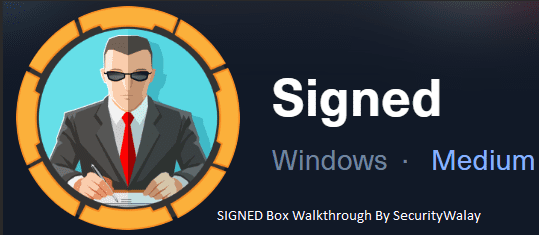In today’s rapidly evolving cybersecurity landscape, organizations face increasingly sophisticated threats. To effectively manage and respond to these challenges, many are turning to Cloud-based Security Orchestration, Automation, and Response (SOAR) solutions. These tools offer comprehensive capabilities to streamline security operations, automate repetitive tasks, and enhance incident response efficiency. In this detailed, technical, and informative guide, we will explore the top five cloud-based SOAR solutions that can help your organization fortify its security posture.
Understanding Cloud-Based SOAR
What is Cloud-Based SOAR?
Cloud-based SOAR solutions are platforms hosted in the cloud that integrate security orchestration, automation, and response capabilities. They enable organizations to unify their security tools, automate routine processes, and respond to threats more effectively. By leveraging the cloud, these solutions offer scalability, flexibility, and cost-efficiency, making them ideal for organizations of all sizes.
Why is Cloud-Based SOAR Essential?
As cyber threats become more complex, traditional security tools often fall short. Cloud-based SOAR solutions address these limitations by providing a centralized platform for managing security operations. They enhance visibility, streamline workflows, and enable real-time threat detection and response, significantly reducing the risk of data breaches and other security incidents.
The Top 5 Cloud-Based SOAR Solutions
1. Palo Alto Networks Cortex XSOAR
Overview
Palo Alto Networks Cortex XSOAR is a leading cloud-based SOAR platform designed to automate and orchestrate security operations. It integrates seamlessly with existing security tools, providing a unified approach to threat management and incident response.
Key Features
- Automated Playbooks: Cortex XSOAR offers pre-built and customizable playbooks for automating incident response workflows.
- Threat Intelligence Integration: It integrates with various threat intelligence sources to enhance threat detection and analysis.
- Case Management: The platform provides robust case management capabilities, enabling security teams to track and manage incidents from detection to resolution.
- Collaborative Platform: Cortex XSOAR supports collaboration among security teams, facilitating efficient communication and coordination.
Benefits
- Enhanced Efficiency: Automation of routine tasks frees up security personnel to focus on strategic initiatives.
- Improved Response Times: Real-time threat intelligence and automated workflows reduce MTTD and MTTR.
- Scalability: As a cloud-based solution, Cortex XSOAR scales easily to meet the needs of growing organizations.
2. IBM Security Resilient
Overview
IBM Security Resilient is a powerful SOAR platform that combines security orchestration, automation, and response capabilities with robust analytics and reporting tools. It is designed to help organizations respond to incidents quickly and effectively.
Key Features
- Dynamic Playbooks: Resilient offers dynamic playbooks that adapt to evolving threats and incident scenarios.
- Incident Visualization: The platform provides detailed visualizations of incident data, aiding in analysis and decision-making.
- Integration Capabilities: It integrates with a wide range of security tools and technologies, ensuring seamless operation within existing security infrastructures.
- Advanced Analytics: Resilient uses advanced analytics to identify patterns and trends, enhancing threat detection and prevention.
Benefits
- Comprehensive Incident Management: The platform’s robust incident management capabilities ensure thorough tracking and resolution of security incidents.
- Flexibility: Customizable playbooks and workflows allow organizations to tailor the platform to their specific needs.
- Enhanced Decision-Making: Detailed visualizations and advanced analytics provide security teams with the insights needed to make informed decisions.
3. Splunk Phantom
Overview
Splunk Phantom is a cloud-based SOAR solution that focuses on automating and orchestrating security operations to improve efficiency and effectiveness. It integrates seamlessly with the broader Splunk ecosystem, providing a comprehensive security management platform.
Key Features
- Automation and Orchestration: Phantom automates repetitive tasks and orchestrates complex workflows, reducing manual effort.
- Playbook Development: The platform offers a visual playbook editor, enabling security teams to create and customize response workflows.
- App Integration: Phantom supports integration with a wide range of security tools through pre-built apps and connectors.
- Incident Response: It provides robust incident response capabilities, including threat intelligence integration and case management.
Benefits
- Reduced Manual Effort: Automation of routine tasks frees up security personnel to focus on high-priority activities.
- Improved Efficiency: Orchestration of complex workflows enhances overall efficiency and effectiveness of security operations.
- Scalability: As part of the Splunk ecosystem, Phantom scales easily to accommodate the needs of growing organizations.
4. Microsoft Azure Sentinel
Overview
Microsoft Azure Sentinel is a cloud-native SIEM and SOAR solution that offers advanced threat detection, investigation, and response capabilities. It leverages the power of Azure to provide a scalable and flexible security management platform.
Key Features
- AI and Machine Learning: Azure Sentinel uses AI and machine learning to detect and respond to threats in real-time.
- Integrated Threat Intelligence: The platform integrates with various threat intelligence sources, enhancing threat detection and analysis.
- Automated Response: Sentinel offers automated response capabilities, including playbooks and workflows for incident response.
- Scalability: As a cloud-native solution, Sentinel scales easily to meet the needs of organizations of all sizes.
Benefits
- Real-Time Threat Detection: AI and machine learning enable real-time detection and response to emerging threats.
- Enhanced Efficiency: Automation of response workflows reduces the workload on security teams and improves response times.
- Cost-Effectiveness: As a cloud-native solution, Sentinel eliminates the need for expensive on-premises infrastructure.
5. Siemplify
Overview
Siemplify is a cloud-based SOAR platform that focuses on providing a unified approach to security operations. It offers robust orchestration, automation, and response capabilities, along with advanced analytics and reporting tools.
Key Features
- Unified Security Operations: Siemplify provides a centralized platform for managing security operations, enhancing visibility and coordination.
- Playbook Automation: The platform offers pre-built and customizable playbooks for automating incident response workflows.
- Threat Intelligence Integration: Siemplify integrates with various threat intelligence sources to enhance threat detection and analysis.
- Advanced Analytics: The platform uses advanced analytics to identify patterns and trends, improving threat detection and prevention.
Benefits
- Enhanced Coordination: A unified platform enhances coordination among security teams, improving overall efficiency and effectiveness.
- Improved Response Times: Automation of response workflows reduces MTTD and MTTR, minimizing the impact of security incidents.
- Scalability: As a cloud-based solution, Siemplify scales easily to meet the needs of growing organizations.
Choosing the Right Cloud-Based SOAR Solution
Assess Your Needs
Before selecting a cloud-based SOAR solution, it is essential to assess your organization’s specific needs and requirements. Consider factors such as the size of your organization, the complexity of your security infrastructure, and the types of threats you face.
Evaluate Features and Capabilities
Each SOAR solution offers a unique set of features and capabilities. Evaluate these carefully to ensure that the solution you choose aligns with your organization’s needs. Consider factors such as automation, orchestration, integration capabilities, and scalability.
Consider Integration
Integration with existing security tools is crucial for maximizing the benefits of a SOAR solution. Ensure that the platform you choose can seamlessly integrate with your current security infrastructure, including SIEM, EDR, and IAM solutions.
Prioritize Usability
Usability is a critical factor in the effectiveness of a SOAR solution. Choose a platform with a user-friendly interface and intuitive workflows to ensure that your security team can effectively utilize its capabilities.
Review Costs
Cost is an important consideration when selecting a cloud-based SOAR solution. Evaluate the pricing models of different platforms to ensure that they fit within your organization’s budget. Consider factors such as subscription fees, licensing costs, and potential savings from automation.
Conclusion
Integrating a cloud-based SOAR solution with your existing security tools offers numerous benefits, including enhanced visibility, improved incident response efficiency, and streamlined workflow automation. By leveraging the capabilities of leading SOAR platforms such as Palo Alto Networks Cortex XSOAR, IBM Security Resilient, Splunk Phantom, Microsoft Azure Sentinel, and Siemplify, organizations can significantly strengthen their security posture and effectively manage the complexities of modern cybersecurity threats.

